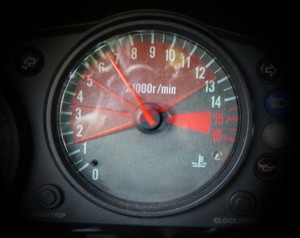
What is Throttle Blipping?
To execute smooth downshifts it is important to match the engine speed with the road speed. You can do this by slowly easing out the clutch (after you apply the brakes, please). But sometimes a rapid downshift is necessary or desirable. Unfortunately, releasing the clutch quickly can lead to abrupt re-engagement. This is where throttle blipping comes in.
Throttle Blipping is the term used to describe the rev-matching technique where the rider momentarily “blips” the throttle to increase engine rpm to better match the revs to the road speed when downshifting. You’ve probably heard riders blip their throttle, but may have thought they were just being obnoxious and annoying as they roll to a stoplight.
The best example of throttle blipping can be heard when a sport bike is decelerating and downshifting (and usually braking) from high speed. Listen to my friend Aaron as he demonstrates some of the quickest and smoothest throttle blipping I’ve heard (or is it the magic of modern sport bike electronics?). Listen at the end of the straight starting at 0:15:
Here’s another video showing my throttle hand as I blip the throttle. See 2:20. For comparison, I enter the same corner, but without blipping at 4:08.
Here’s another video showing me smoothly execute three non-blipping downshifts at around 4:15:
How to Blip a Throttle
The throttle blipping technique is done by quickly cracking the throttle open then closed (blip) while you simultaneously squeeze the clutch and click the gearshift lever. The point is to get engine RPM matched to the lower gear ratio before you release the clutch. The rapid blipping technique occurs within the span of less than one second. The clutch is quickly squeezed and released as the transmission is shifted down and the right hand blips the throttle. This is repeated with every downshift, one gear at a time.
You can blip the throttle rapidly to reduce the time between gears, or you can be leisurely. High-performance riders blip the throttle very quickly when downshifting between gears as they set up for a corner. Street riders may choose to blip the throttle when downshifting. This is done more slowly when coming to a stop.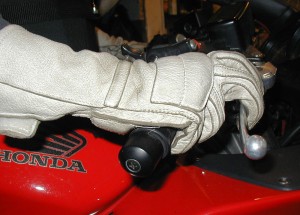
Brake and Blip
Oftentimes, you need to brake while downshifting, but trying to simultaneously brake and blip is a difficult skill to master. The problem is that moving the right hand to blip also causes the fingers to move, which invariably changes brake pressure. Combining braking and throttle blipping can be done with less difficulty if you apply the front brake with your index and middle fingers while you close and open the throttle with your thumb and two outside fingers. Arching your brake fingers is also helpful in isolating throttle movements.
The point is to blip the throttle while keeping consistent brake lever pressure. This is most easily done when using very firm braking pressure , like when braking hard from high speeds where brake lever movements translate into relatively minor brake force changes.
Is Blipping Necessary?
Some motorcycles benefit from throttle blipping more than others. A big V-twin or single cylinder engine with a lot of engine braking can more easily lock the rear tire if the clutch isn’t released carefully, so blipping makes sense. But, for many bikes, especially ones with in-line 4 cylinder engines, it’s easy enough to quickly but gradually release the clutch between downshifts. It’s what I do when I ride my Triumph Street Triple on the street or track (see video below). With the introduction of slipper clutches on many sportbikes these days, it’s even less necessary to blip the throttle.
Still, a lot of riders swear by throttle blipping. That’s fine, if you do it skillfully. I find that it just adds another thing to do while I’m screaming into turn 1 at over 100mph. Listen to my downshifts at the end of the long straightaway in this video from a recent track day, starting at 2:06 and then throughout the video. You can hear how I simply downshift and then ease out the clutch. It’s done quickly, but smoothly:
Engine Braking
Not blipping the throttle means I don’t have the problem of coordinating throttle blipping while modulating the front brake, but there is an added benefit that comes from the stabilizing effect that engine braking offers. Let me explain.
Rear brake force, either in the form of rear brake application (which I do not use on the track) or from engine braking, “pulls” the rear of the motorcycle in line with the front wheel. Blipping the throttle during downshifts minimizes engine braking compared to simply easing out the clutch. Engine braking still happens, it just occurs in a shorter duration of time and can be abrupt if not done well.
Do you blip your throttle? If so, or if not, tell us why?
If you liked this article and the many other articles on this site, please toss a buck or five into the hat. Select an amount and then click the PayPal Pay Now button. It’s greatly appreciated!
Please Donate to Keep the Articles Coming
If you liked this article and the many other articles on this site, please toss a buck or five into the hat. It’s greatly appreciated!
- Click the PayPal “Pay Now” button.
- Then indicate quantity in $2.00 increments. – Example: put “2” in “QUANTITY” field to donate $4.00, “3” for a $6.00 donation, etc.
Why $2.00? Due to the PayPal fee structure, a $2.00 donation is significantly more beneficial compared to a $1.00 donation.
Thank You!
Some related posts:
- Track Day Bike Prep-Triumph Street Triple R
- Body Position Tips
- 10 things you need to know about Trailbraking
- Knee dragging 101: Fundamentals You Need to Know
Stay Informed: Subscribe NOW!
Be a Better Rider: Sign Up for Personal Training with Ken
Support Riding in the Zone: Buy a book
Support Riding in the Zone: Buy products from Twisted Throttle & Amazon

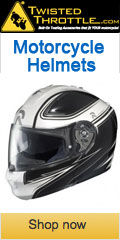


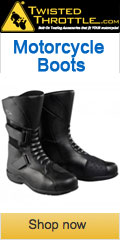



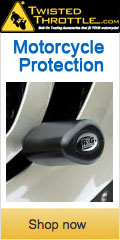
I love to blip, would rather get it all done in 1/2 second than spend a lot longer easing out the clutch. It was a challenge to learn, but such a pleasure to do well once it “clicked”.
How much do you blip? 400rpm? 500? 600? How can you tell?? One day I noticed that when I up shifted the rpm dropped 500 rpm with the bike at the same speed. Same with the next gear.. Hummm So on a down shift I blipped 500 rpm and Voila!! smooth. This along with preloading the shifter and it’s almost like an automatic tranny.. Practice this in a empty parking lot.. as you will be looking at the tach. After a while you can feel and hear the right rpm to blip at. YMMV, works for me!!
Great book btw…
Terrific, Mitch. It is a great technique when done well.
I always blip the throttle on my singles, it helps a lot when riding a super moto to keep engine braking in check as well as prevent unnecessary sliding on the track. I started doing it when I started riding and never knew anything different. It was just another skill I carried over from performance driving.
I blip juz to synchronize the stuff for smooth shifting not for rev matching. It’s become habit, do it without thinking.
I don’t blip when riding normally (city and/or heavy traffic), but always do so when more aggressive riding is allowed. Comes from sports-car days and has simply carried over. Actually puts less stress on the machine as a result of smoother shifts. In time on one machine, it’s possible to downshift without feeling it, even when simultaneously braking. Your tranny will love you!
I Rev Match, but I also find it very difficult to do it while getting on the front brake. I honestly don’t really need to blip the throttle on my 2014 ZX-6R for a few reasons:
1: Slipper Clutch
2: It’s a 636cc motor and as with all 600 supersports, the gear box is a close ratio box. The RPM’s between gears change very little compared to a liter bike.
3: On the street, you aren’t pushing your bike to that level.
Now I still do it, just to keep me in the rhythm of doing it on the track.
I never throttle blip here’s why I’m never really riding fast or hard. I have a 2007 Gsxr 1000. I simply engine brake. I would love to master the skill of Throttle bliping but it’s confusing to me. can someone explain step by step your help would be greatly appreciated.
The steps are outlined in the article, no?
Hi Ken!
Great article.
I’ve been doing a lot of talking with people on various forums about downshifting now and I really think that rev matching is one of those things that is a little misunderstood and perhaps even a bit overrated.
After over a decade of deliberate experimentation with different downshifting techniques on the track (including clutchless downshifting) I’m of the VERY firm belief that the true purpose of rev-matching is NOT to smooth out the shift, but simply reduce the amount of time spent to complete the shift.
Even with years of practice, a strong throttle blip will almost always impact ones braking input, something I think we can all relate to. Well, if you’re struggling with smooth braking while rev-matching (as I have for many years), ask yourself WHY you’re even blipping the throttle in the first place. If you’re using the blip as the primary means of achieving a smooth downshift, don’t. That’s what the clutch is there for. INSTEAD concentrate on how you’re using the clutch…
For me, the keys to smooth, seamless downshifts are this… EARLY downshifting (right at the very beginning if my braking zone if possible, a LITTLE blip right as I start braking impacts my braking input much less) coupled that with not fully disengaging the clutch AND (most importantly) more time spent in the friction zone to smooth it out. I found this approach gets the job done quickly, smoothly and has MUCH less of an impact on my braking inputs as I’m nearing the corner.
Thanks for this article, Ken. Sorry to jack this thread but I’m a new rider (<6mths), commuting a fair distance every day and I feel the topic is pertinent. Throttle blipping is something I've just mastered in the past month and swear it makes my daily riding smoother and safer (fingers crossed). My Kawasaki has a slipper clutch which makes blipping mostly redundant at higher speeds, and blipping at intersections is often not necessary. When slowing down at lower speeds and in sketchy road sections/conditions, however, it has really made a difference to my confidence on the bike. For example, on my evening commute, the last two intersection corners before my house are slightly sketchy scenarios that have forced me to be careful. The first corner comes off a bitumen road that was resealed work completed several months ago and there is a bit of loose gravel lingering around. Around dinner time, this busy urban road features aggressive drivers keen to get home in a hurry. The next and last last corner combines a 10 degree downhill section into a 90 degree L intersection that is slightly uphill. This piece of road is often damp or wet due to overhanging trees. I've experimented with regular downshifting before both corners. If I downshift gently after engine braking to a low speed there is no problem but it entails going around these corners very slowly! At slightly higher speeds I have experienced slight lockups on both corners. Now that I can blip when necessary I feel armed with much better skills to deal with these situations.
One trick to mastering blipping that helped me a lot is to practice on the bike with the motor off. Open the throttle and then imagine you’re approaching a turn. Rapidly and simultaneously close the throttle, squeeze the clutch and tap down on the shifter, followed by rapidly re-opening the throttle multiple times to get down to the desired gear. Keep practicing that way until it becomes muscle memory. Then put it into practice on a moving bike. One word of caution–the technique is much easier with some speed. At first I practiced at slow speeds and it was quite frustrating and difficult. Once I tried it at about 35 mph, it was smooth and easy. Once you master the technique, you can’t imagine how you rode without it. It allows you to aggressively approach turns and smoothly get down to safe speed and gear before entering the turn without upsetting the suspension. It’s made a huge difference in my control and enjoyment being aggressive in the twisties. Hope this helps.
I was told opening the throttle while your bike is off can flood the engine.
I have never thought that throttle bliping was used for smooth deceleration but instead to drop rapid speed while keeping maximum traction.another positive is you already in a lower gear for excelling oit of the corner
thudbucket, blipping or not, you always downshift BEFORE the corner. You always need to be in the right gear to excell out of the corner. If you are in a too high gear, than you didnt downshift (enough) be it with or without blipping….. One NEVER should downshift AFTER the corner, so I really dont understand what you are talking about.
and maximum traction,…. again, with or without blipping, you only start accelleration (get on throttle and thus using traction) around the apex, AFTER your braking and downshifting
if you did that right, you’re in the right traction zone gear, rpm and grip wise…. be it with whatever technique you used